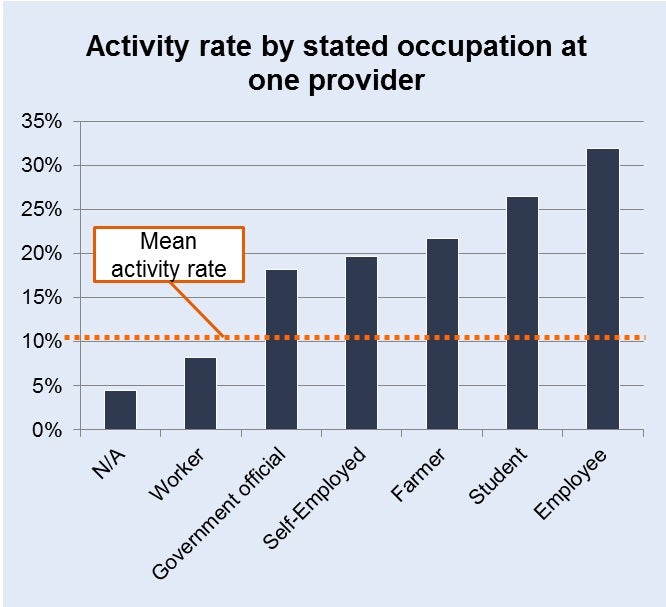Segmentation: A Tool to Enhance Activity Levels
In the first two posts in this series, we introduced CGAP’s work on the importance of data analytics to tackle low customer activity and looked at what data tells us about getting customer activity right from the very beginning. In this third and final post, we’re going to take a look at one of the most fundamental types of data analysis: customer segmentation. The deck highlights several types of customer segmentation but in this post we’ll focus on two simple but effective types – customer demographics and super-users.
Customer segmentation is a powerful marketing tool which can be used to understand customers, design products and tailor advertising messages. It’s based on the premise that some customers will find a service extremely valuable while others couldn’t care less about it. Segmentation divides the market into groups of individual customers with similar needs or wants. It allows providers to focus scarce marketing resources and appeal to high-potential customers in ways that are likely to make them active. Using segmentation, providers can tailor product features or marketing messages to speak to the needs and interests of different groups.
 Customer Segmentation
Customer Segmentation
We found that one of the most basic ways of segmenting customers – by demographics – is actually highly correlated with differences in activity rates. Many providers don’t capture a lot of customer information and are missing a valuable opportunity to understand and target customer demographic segments. Some demographics which have a significant impact on activity are:
- Gender – Female customers are 41% more likely to be active than males.
- Income – Customers in the lowest income bracket at one provider are 3 times as active as customers in the highest income bracket. Only one provider out of the four actually tracks income levels so we cannot make a generalized claim about income – but it certainly is valuable information for the provider in question.
- Occupation – Activity rates for some occupation segments like students and farmers are 3 times the overall average activity rate of the service.
Demographics affect activity differently across different market contexts so providers must collect and analyze their own data rather than rely on these or any other generalizations. For example, with one provider younger customers were more active than older customers while with a different provider older customers were more active than younger.
Another way we segmented customers was by activity level. We found that each provider had a core group of very loyal “super-users” that are responsible for a disproportionate share of total transactions. On average, 5% of users are responsible for 30% of the total value transacted! In public health, an approach called positive deviance is used to identify individuals with better outcomes than their peers and study their behavior to develop successful solutions across entire communities. In a similar way, branchless banking providers should study their own super-users to find out what part of the value proposition appeals so highly to them and figure out how to broaden this to a wider group.
Once providers have determined which segments are most likely to be active, they can identify what these customers find valuable and then enhance the product/service fit and develop specific marketing messages targeted at these segments. Segmentation is a powerful tool that providers should take advantage of to understand customers and nurture active, loyal customers.
- Claudia McKay & Toru Mino


Add new comment